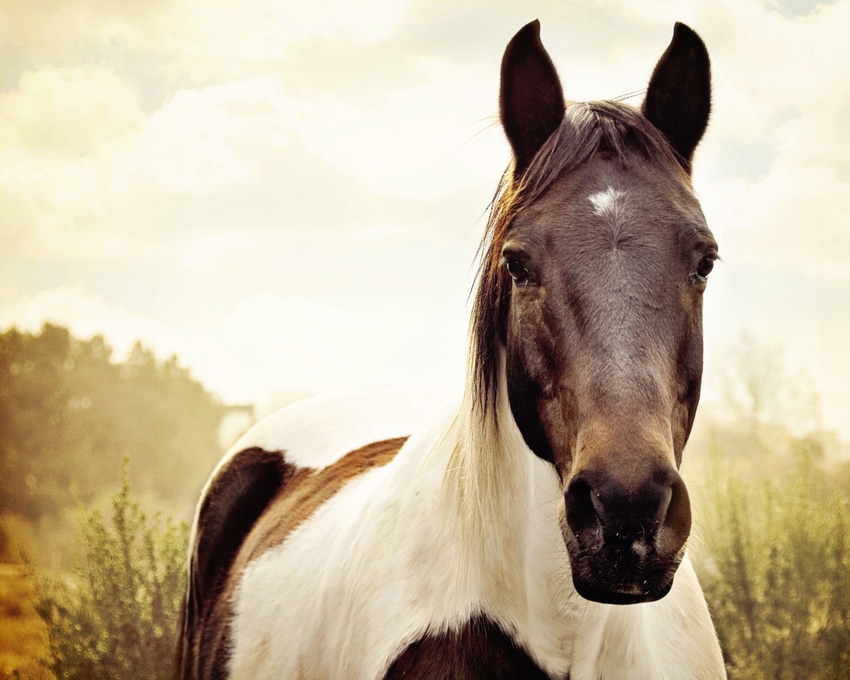Vesicular disease found in horses in Texas and New Mexico.

The Texas Animal Health Commission (TAHC) recently announced that the first cases of vesicular stomatitis virus (VSV) was confirmed in horses on a Kinney County, Texas, premises on June 21.
The National Veterinary Services Laboratories (NVSL) confirmed the virus as the Indiana serotype, TAHC said.
Subsequently, the New Mexico Livestock Board (NMLB) announced that NVSL confirmed on June 26 a VSV finding (Indiana serotype) on a premises in Sandoval County, N.M. This is the 2019 VSV index case for New Mexico.
In the Texas case, the horses were tested after the owner observed lesions on the horses’ muzzles and contacted a veterinary practitioner, TAHC said, noting that it has quarantined the premises, and there has been no known exposure to other horses. The quarantine period for premises with suspected or confirmed VSV cases is 14 days from the onset of lesions in the last affected animal on the premises.
VSV can cause blisters and sores in the mouth and on the tongue, muzzle, teats or hooves of horses, cattle, swine, sheep, goats, llamas and a number of other animals, TAHC explained. Lesions usually will heal in two or three weeks.
Because of the contagious nature of VSV and its resemblance to other diseases such as foot and mouth disease, animal health officials urge livestock owners and caretakers to report these symptoms to their veterinarian immediately, TAHC said. Most animals recover from VSV with supportive care by a veterinarian.
“Known competent vectors for transmission of VSV include black flies, sand flies and biting midges,” TAHC executive director Dr. Andy Schwartz said. “Livestock owners should implement best practices to limit livestock exposure to insects.”
In the New Mexico case, NMLB said two horses on the premises have met the case definition of infection with compatible clinical signs and positive titers. Both horses were also polymerase chain reaction (PCR) positive for VSV (Indiana serotype) on swabs collected from the lesions.
NMLB said the VSV index premises for New Mexico is a boarding facility with 17 horses, seven llamas and two goats. The two horses confirmed as VSV infected reside in a pasture together and have no recent history of movements from the premises. No other animals at the facility are currently showing clinical signs of VSV, NMLB said. The facility is under state quarantine and will remain so until at least 14 days from the onset of lesions in the last affected animal on the premises.
Colorado state veterinarian Dr. Keith Roehr said while the VSV cases are several-hundred miles from Colorado, the findings are concerning to livestock owners in Colorado due to the potential of a northward movement of the virus throughout the summer.
“This recent confirmation of VSV in Texas serves as a reminder that livestock owners must be vigilant in safeguarding their herds from this virus,” Roehr said. “Now is the time to start thinking about disease mitigation practices to protect Colorado’s livestock.”
Colorado most recently experienced VSV outbreaks in 2014 and 2015, resulting in several-hundred quarantines and movement restrictions involving horses and cattle, Roehr said. The goal in management of the disease is to accomplish effective control while minimizing the negative economic impacts to livestock owners.
“While, at this time, it is difficult to predict whether VSV will move northward, a few simple steps can go a long way in protecting Colorado’s livestock,” Roehr said, noting that those tips are:
* Strict fly control is an important factor to inhibit the transmission of the disease.
* Avoid transferring feeding equipment, cleaning tools or health care equipment from other herds.
* Fairs, livestock exhibitions and rodeos may institute new entry requirements based on the extent and severity of VSV outbreaks. A certificate of veterinary inspection (health certificate) issued within two to five days prior to an event can be beneficial in reducing risks.
Be sure to stay informed of any new developments of VSV in Texas and potentially other states.
The Utah Department of Agriculture & Food's Animal Industry Division is now requiring that all imports of horses, cattle, bison, cervids, sheep, goats and swine from states that have a confirmed VSV-positive animal or have quarantines in place for this disease to be accompanied by an entry permit number on certificate of veterinary inspection prior to import into Utah.
“If you suspect your animal has VSV, notify your private veterinarian immediately,” Schwartz said. “VSV is not highly contagious to people, but it can cause flu-like illness if infected saliva gets into an open wound, eyes or mouth. People handling potentially infected animals should wear gloves for protection and talk with a physician if they have questions."
About the Author(s)
You May Also Like

.png?width=300&auto=webp&quality=80&disable=upscale)

